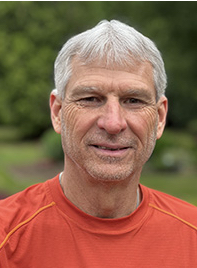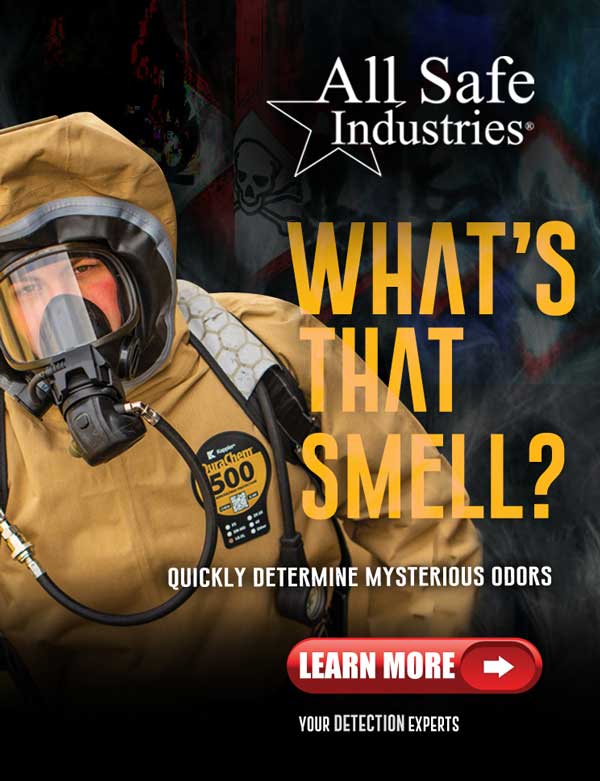By Ron Holcomb
Editor’s Note: Author Ron Holcomb is sharing a chapter from his recently released book Constant Chaos. You can also read previously published chapters here. We’ll feature other chapters in the coming months. Click here for more information on how to get his book.
PART V Human Tragedy
Chapter 19 — Chemical Suicides
The most unexpected hazardous materials incidents I managed involved chemical suicides. They are a small subset of all suicides — firearms remain the most common method — and unfamiliar to most people. Suicides typically are not reported in the news unless it is a well-known public figure or happens in a public place. That policy is intended to prevent copycat situations. So chemical suicides, which are rare, haven’t received much news coverage at all.
This unusual type of suicide was first noted in Japan around 2007. It involves mixing household chemicals such as toilet bowl cleaner and lawn fertilizer to create a lethal toxic gas, usually hydrogen sulfide. Not surprisingly, there are instructions available on the internet detailing the steps. The instructions also describe how to make warning signs about the dangerous conditions that will be present to unsuspecting family members and emergency responders. Victims of chemical suicide frequently follow this advice and leave handmade warning signs on car windows, bathroom doors or even hotel rooms.
At the scene, our role was to stop the chemical reaction and remove the remaining chemicals so the coroner or medical examiner could safely complete their work. There weren’t many chemical suicides in our region, but the few that I worked took an emotional toll.
A 2016 response
My duty partner Kris Grinnell called me on the first night of our duty week in September 2016. Grinnell was the Primary After-Hours Responder, so he received the initial call. He told me Cowlitz 2 Fire and Rescue requested our help with a chemical suicide situation in Longview. I was surprised, however, when Grinnell explained the fire department said it involved carbon monoxide and not hydrogen sulfide. Our spill team was not familiar with chemical suicides involving carbon monoxide, so I knew we would have to do some research during the 60-mile drive south to Longview.
Our spill team was familiar with carbon monoxide, which is a colorless, odorless and tasteless gas produced by burning gasoline, wood, propane, charcoal or other fuel. Every one of our handheld air monitors had a carbon monoxide sensor. Improperly ventilated appliances and engines, particularly in a tightly sealed or enclosed space, allows carbon monoxide to accumulate to dangerous levels. Poisoning occurs when the body replaces oxygen in red blood cells with carbon monoxide, causing serious tissue damage or even death. There have been many suicides by people sitting in a running vehicle in a closed garage. But a chemical-based carbon monoxide suicide was something new.
Also Read: Are chemical suicides a ‘growing risk’ for first responders?
Grinnell and I normally spent our drive time talking about our shared interest in sports. On this trip to Longview, however, we were focused on learning as much as we could about this unusual kind of suicide. I was driving so Grinnell was on his phone searching the internet. Sure enough, he found information that showed mixing formic acid with sulfuric acid does in fact generate carbon monoxide. It was a rare form of chemical suicide that we had never heard of.
When we arrived in Longview, we learned the situation started when police and the fire department made a welfare check in an apartment. The victim was found alive in the bathroom, but a police officer suffered a chemical inhalation exposure, and a firefighter had a chemical burn on his arm. The victim was transported to the local hospital and was being treated. Cowlitz 2 Fire & Rescue’s Hazmat Team entered the apartment in protective chemical suits and air tanks. They told us they found no levels of concern on their air monitoring instruments but they saw two bottles of formic acid and two bottles of sulfuric acid. They also said there was liquid in the bathtub held in place with a crude plug made from gauze and a plastic bag.
Dealing with the chemical mess
Grinnell and I prepared our safety plan that included our objectives to enter the apartment, retrieve the acid containers and deal with the remaining chemical mess in the bathtub. We entered the apartment wearing full chemical protective suits and respirators along with our handheld air monitors. The fire department had cut power to the apartment in case there had been any flammable vapors present, and the hazmat team had opened windows to ventilate any hazardous vapors that remained. We conducted our search in the completely dark apartment with flashlights. We looked in every room for chemical containers or other hazardous materials just in case the hazmat team might have overlooked them.
Our search revealed nothing unusual. Inside the bathroom we found the four nearly empty acid containers and got a look at the bathtub. We suspected the two different acids were dumped in the bathtub to create carbon monoxide gas. But the makeshift plug was not fully secure. The reaction must have been incomplete. It did generate acid gas and left a strong acidic solution in the bathtub. We didn’t detect any carbon monoxide in the air with our monitor.
Also Read: 6 Chemical Suicides Your Hazmat Crew Needs to Prep for
We diluted the small amount of residual acidic waste in the tub until no more acid was detected on our test strips. I removed the gauze and plastic from the tub and rinsed the neutralized liquid down the drain. Grinnell and I used baking soda to neutralize the residual acid in the containers and on the gauze and plastic I had removed from the bathtub.
I explained what we found and observed to the county health department environmental manager, who had come to the scene at our request. Per normal protocol, I advised that Ecology would defer to the health department regarding re-entry into the apartment and the adjacent apartment that had been evacuated as a precaution. Ecology isn’t a public health agency, so Grinnell and I had no authority regarding the status of the apartments.
The next day I had an email exchange with Dave Kummerlowe, president of Cadre, a hazardous materials training and consulting company. Kummerlowe is a chemist and expert on hazardous materials I’d known since the early 1990s. He had worked with NOAA’s world-class spill response group in the 1980s before starting his own company and was a frequent Ecology trainer. Kummerlowe was always willing and available to help Ecology Spill Responders with new or unusual situations.
He sent me the chemical formula for generating carbon monoxide with formic and sulfuric acid. His information indicated that heating the mixture would enhance the creation of the deadly gas. By not heating the mixture, the would-be suicide victim was saved from a lethal carbon monoxide exposure but suffered injury from the acid gas the reaction generated. It was the only carbon monoxide chemical suicide incident in our region during my career.
A 2018 incident
A more typical chemical suicide incident that I managed occurred in June 2018 at the Mima Mounds Natural Preserve Area outside Littlerock in Thurston County. The 911 dispatcher told me someone committed suicide in their car and there were signs on the windows stating “Deadly Gas” inside. The Thurston County Sheriff’s Department and West Thurston Regional Fire Authority were on-scene and requested our help.
I called my duty partner Nannette Brooks and told her about the situation. Since she had already left work for the day, I asked her to meet me at the 637-acre state-protected preserve and National Natural Landmark in her response truck. Brooks had been an after-hours spill responder for quite a few years, and it was helpful to have her experience as a hazardous waste inspector and toxic cleanup specialist on the team. She lived on a ranch with horses outside Rochester in northern Lewis County, so it was often more efficient to drive to after-hour incidents separately in our own response trucks.
Brooks arrived at the preserve not long after I did and shortly before several representatives from the Thurston County Coroner’s office. The parking area was in the forest that was a gateway to various loop trails to the open prairie where the mysterious Mima Mounds are located (scientists are still searching for an explanation for how these mounds of soil were created). From a distance, we looked at the small pickup truck that was parked at the end of a single parking space isolated from other parking spots. The victim was still in the driver’s seat. Brooks and I would have to get the chemicals and stop any further toxic gas reaction before the body could be removed. From an emotional perspective, working next to the victim’s body to retrieve the toxic chemical mixture was going to be the most difficult part of our response.
Keeping focus in difficult circumstances
Brooks and I completed our safety plan then put on our chemical suits and respirators. Before I put my head inside the vehicle to remove the chemical container, I used my handheld air monitor to measure the level of what we suspected would be hydrogen sulfide. Just as I had imagined, it was difficult to fully focus on our job in the presence of a recently deceased individual. Suicide is a tragic situation under any circumstance, and I was overcome with an incredible sense of grief for the victim, his family and friends.
When I fully opened the door on the passenger side of the truck, I saw something unexpected next to the victim. There was a respirator lying beside him. Why would someone wanting to commit suicide have a respirator that could protect him from the deadly gas? The only explanation that I could think of was that he wore the respirator while mixing the chemicals in the 5-gallon plastic bucket located on the floor in front of the passenger seat. This would presumably allow time to get the reaction going, filling the car with hydrogen sulfide. Then he must have removed the respirator and placed it beside him on the seat before inhaling the lethal gas.
Also Read: Quick Guide: When to Call Hazmat Teams, and When not to
When we measured the air inside the vehicle and in the 5-gallon container, no hydrogen sulfide vapors were detected. This told me that a very precise mixture of the acid and lime sulfur he used generated a nearly complete chemical reaction. Our experience in other cases was that the chemicals weren’t carefully measured when mixed and that the reaction could continue or start up again when the container was moved or agitated.
Because suicides are unnatural deaths and technically considered a homicide, police investigate, and the coroner conducts an autopsy. The detective at the scene asked us to collect some papers and documents he had observed through the window. After we removed all the chemical containers and documents from the vehicle, we advised the coroner’s representatives that it was safe to remove the body.
Our final task was to neutralize the remaining residual chemical mixture to ensure it would not react any further producing the toxic hydrogen sulfide. Then the remaining waste could be properly disposed of. It took little effort to accomplish this, which confirmed my assessment about the effort the victim must have taken to accurately mix the chemicals.
I have driven and biked by the Mima Mounds Natural Preserve Area numerous times since that day in 2018. It’s not far from my home. Each time it triggers a deep feeling of sadness and grief for that person and his family.
About the Author

Ron Holcomb worked as a spill responder for the Washington State Department of Ecology before retiring in 2020 after a 40-year public service career dedicated to protecting the environment. He was the Spill Team Lead for Ecology’s Southwest Region and personally handled more than 6,000 oil and hazardous material spill incidents. Prior to being a spill responder, he was a public information officer for Ecology and the Wisconsin Department of Natural Resources. He received a Master of Science in Environmental Communications from the University of Wisconsin after graduating with a degree in Journalism, Biology and Natural Resources from Humboldt State University in Arcata, Calif. He developed his love of the outdoors and concern for the environment during childhood experiences in national parks and forests, and as a member of The Mountaineers. In retirement he still enjoys climbing peaks in the Olympic and Cascade Mountains.



